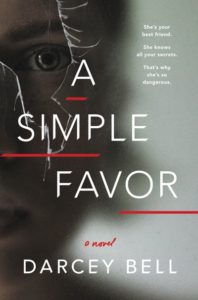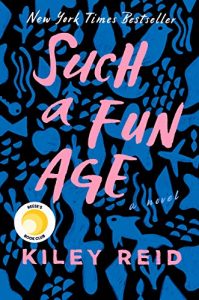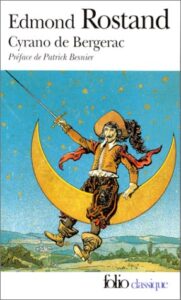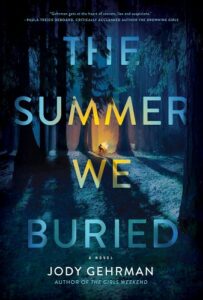The concept of the frenemy is not new. A potent mixture of friend and enemy, this oxymoronic portmanteau first appeared in the English language in the late 1800s, albeit with a different spelling (“frienemy”).
In recent decades the word has been dusted off, streamlined, and given new life. Fueled by the duplicity of social media—the ability to behave one way IRL and wear another face online—the frenemy appears in more guises than ever both in novels and in films.
It’s little wonder that the frenemy continues to haunt us. It’s a powerful archetype; characters we both love and hate hold a unique fascination. They are more maddening than simple friends or enemies; because they embody elements of both, they are unpredictable, messy, and dangerous.
The uneasy nature of frenemies in our daily lives is exactly what makes them so delicious on the page and the screen. While most of us value loyalty and consistency in our relationships, the wild card of the frenemy in fiction adds an extra layer of suspense and surprise.
Here are a few examples of books and films that illustrate why frenemies are here to stay.

Single White Female by John Lutz
The 1990 novel that spawned the iconic film starring Bridget Fonda and Jennifer Jason Leigh still resonates today. When I aspired to dress like my fashionista friend, her girlfriend jokingly accused me of “single white female-ing her,” proof that this tale of unstable female friendship still has a place in our popular imagination.
If you haven’t read the book or seen the movie, they’re both worth your time, even if just for their kitsch value in pop culture history. The spirit of the early nineties and its ham-fisted forays into third wave feminism is alive and well in both, imbuing them with a flavor that alternates between cringey and compelling.

Jennifer’s Body by Diablo Cody
Screenwriter Diablo Cody hit a homerun with her debut script, Juno, which won an academy award for best screenplay in 2008. Her sophomore effort, Jennifer’s Body, doesn’t have the understated charm and quirkiness that made Juno a hit, but it’s maintained a cult following. Fans like myself insist it was severely underrated by both critics and viewers when it was released in 2009.
Thankfully, this box office flop has recently been hailed as a feminist cult classic whose main crime was being released ahead of its time. Any woman who had a friend in high school who seemed to have it all will see themselves reflected in the fraught relationship between Jennifer (Megan Fox) and Needy (Amanda Seyfried). These are frenemies in a diabolical situation that amplifies the very real torture of adolescent comparison culture and angst.

A Simple Favor by Darcey Bell
This is another novel that made it to the big screen, again featuring a toxic, dangerous friendship between women. Released in 2018, this tale adds a layer of social media to the frenemy equation; the protagonist is a single mom vlogger and much of the novel is told via her posts. This is one of those rare screen adaptations where the movie is more engaging than the source material, so if you have to choose one or the other, I’d recommend opting for the film.

Never Have I Ever by Joshilyn Jackson
If you haven’t yet sampled the pleasures of Joshilyn Jackson’s musical prose, this addictive thriller is a great introduction to her work. Suburban moms at a book club provide an unlikely, prosaic backdrop for an enigmatic stranger, Angelica Roux, who immediately introduces an element of danger to their staid lives. Roux proceeds to torture the protagonist by threatening to reveal sordid secrets from her past. The cat-and-mouse dynamic between these two very different but equally formidable women is exhilarating. Rumor has it a TV adaptation is in the works.

Such a Fun Age by Kiley Reid
This instant New York Times Bestseller adds complex layers of race and class to the frenemy equation. The two main characters are a wealthy White mother and her Black babysitter, so the power dynamics make true friendship between them unlikely from the start. It’s the desire for friendship—and their inability to attain it—that pushes their relationship into frenemy territory. Reid’s pitch-perfect dialogue, easy social satire, and tight pacing make this a memorable contribution to the frenemy canon.

Cyrano de Bergerac by Edmond Rostand
Like the word “frenemy” itself, this classic play first hit the scene in the late 1800s. Since then, its plot has been worked and reworked in countless incarnations, one of the most famous being Roxanne starring Steven Martin in 1987. A new film adaptation starring Peter Dinklage was released this year, proving that this age-old tale of male frenemies continues to resonate.
Most of the offerings on my list feature female characters locked in uneasy battle, but Cyrano tells another story: two men who are insufficient suitors on their own, but together form the perfect romantic ideal. Their mutual obsession with Roxanne and their inability to woo her without one another’s assistance makes them frenemies that transcend time and culture.

Bittersweet by Miranda Beverly-Whittemore
True to its name, this bittersweet novel explores another of my favorite frenemy tropes: college roommates from very different tax brackets who get caught up in a yin/yang fascination with one another. As their two worlds collide, the lyrical prose, buried secrets, and deftly drawn setting make what could be a shopworn plot fresh and intriguing.
***


















